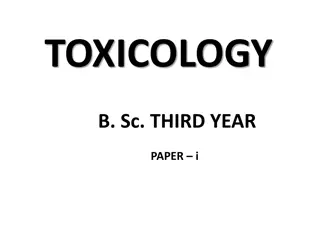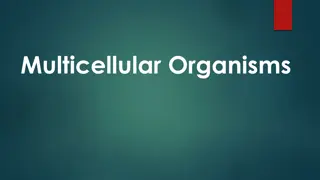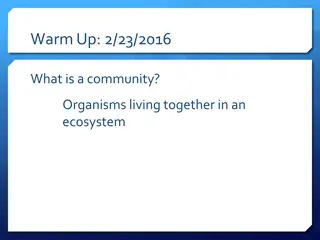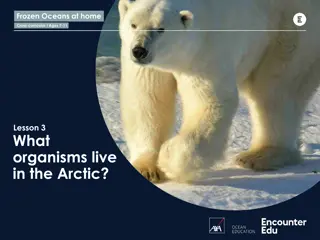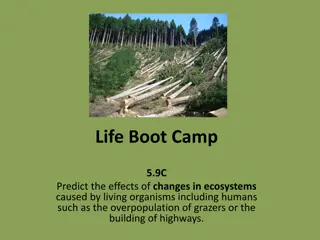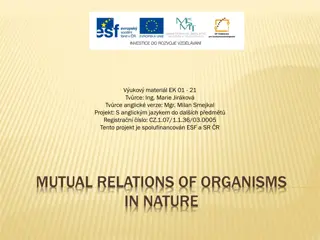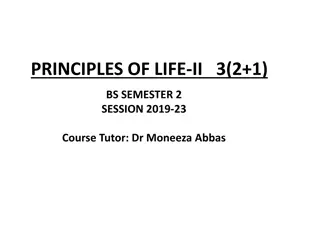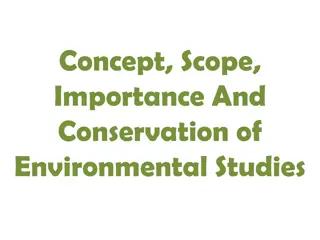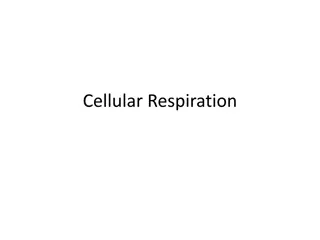Organisms' Responses to Environmental Changes
Organisms demonstrate responses to changes in their environment through stimuli and reactions. These responses can be internal or external, leading to behaviors such as seeking food, avoiding danger, or adjusting growth patterns. Examples include animals seeking food when hungry or plants growing towards sunlight. Understanding different types of stimuli and responses helps us appreciate the complexity of how living organisms interact with their surroundings.
Download Presentation

Please find below an Image/Link to download the presentation.
The content on the website is provided AS IS for your information and personal use only. It may not be sold, licensed, or shared on other websites without obtaining consent from the author.If you encounter any issues during the download, it is possible that the publisher has removed the file from their server.
You are allowed to download the files provided on this website for personal or commercial use, subject to the condition that they are used lawfully. All files are the property of their respective owners.
The content on the website is provided AS IS for your information and personal use only. It may not be sold, licensed, or shared on other websites without obtaining consent from the author.
E N D
Presentation Transcript
An Organisms Responses to changes in their Environment
Stimulus Any change in an organism s internal or external environment that causes the organism to react to the change. Stimuli plural (more than one stimulus)
Response The reaction of an organism to a stimulus.
Examples of stimuli and their responses: The dog is hungry, so it eats some food from the bowl A rabbit sees a wolf, so it runs away to safety
Plants also respond to their environment. When plants grow towards the sun, we call this reaction phototropism
Plants respond to their environment in other ways too . Plants roots grow down towards the water due to the effect of gravity
Two Types of Stimuli Internal External
Internal stimulus A stimulus that comes from inside the organism. When the body becomes too warm due to exercise, the skin responds by sweating. The sweat evaporates and cools the body temperature down.
Internal Stimuli & Responses Think of all the changing conditions that an organism might need to respond to. Here s just a few samples: excited specific responses to these internal stimuli. Rex wa gs tail Where s my hoodie?!? And here are some thirsty Joe drinks H2O Forget shivering too hot sleepy yawn Joe sweats pain tired scr eam lion r ests hungry too cold Joe shiver s owl g r a bs m ouse afraid kitten hides
External stimulus A stimulus that comes from outside of the organism. When the finger senses that something is dangerously hot, it pulls away.
External Stimuli & Responses External stimuli can be more complicated. Let s see how. EXTERNAL STIMULUS RESPONSE Bright sunlight Squinting (ok, this one is pretty simple) moonlight = external stimulus Shorter days, colder temperatures Trees drop their leaves in autumn Increasingly hot weather Dogs shed their thick winter coats in late spring Sunlight, motion of the Sun. Plants grow toward the Sun s position. Difficult survival conditions coming up Hibernation (chipmunks sleep thru cold months) Migration (geese fly to warm weather & easy food) Dormancy (grass turns brown in winter instead of trying to grow & stay green) There really are countless more examples, from as simple as an itch on your arm to the complicated conditions that cause plants to realize winter is over and spring back into life.
Internal or External Stimulus? External pupil When the light is too bright, the pupil size becomes smaller to prevent too much light from going in and temporarily blinding you. When there is not enough light to see, the pupil of the eye enlarges to allow as much light in as possible so you can see.
Internal or External Stimulus? External When pollen enters your nose, the body responds by sneezing.
Internal or External Stimulus? Internal When growth hormones help you add more muscle & bone tissue during growth spurts







